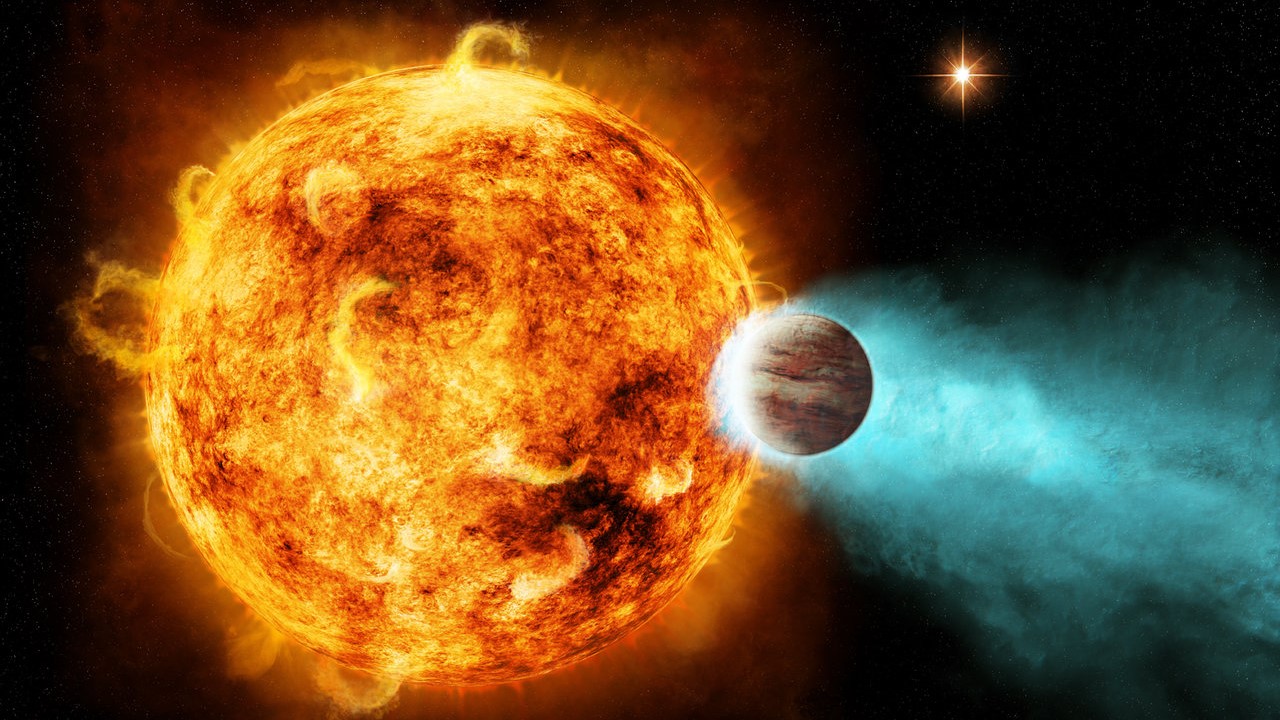A team of astronomers working with the TESS space telescope has announced the discovery of a new exoplanet. It is the size of Saturn and can actively lose its atmosphere due to the proximity of the parent star.

Finding exoplanets
An international team of astronomers reported the discovery of a new exoplanet orbiting a solar-type star. The newly discovered world was designated TOI-1135 b. It is young, hot and comparable in size to Saturn.
To date, NASA’s Transiting Exoplanet Survey Satellite (TESS) has found almost 7,100 candidate exoplanets (TESS Objects of Interest, or TOI), of which 420 have already been confirmed. Since its launch in April 2018, TESS has been using an array of wide-angle cameras to survey about 200,000 of the brightest stars near the Sun to search for transiting exoplanets, including giant planets.
A group of astronomers led by Manuel Mallorquín Díaz from the University of La Laguna, Spain, confirmed another TOI observed by TESS. They detected a transit signal in the light curve of TOI-1135, a young solar-type star of spectral type G0 at a distance of about 371 light years. The planetary nature of this signal was confirmed by further photometry and spectroscopy.
Planet loses atmosphere
TOI-1135 b has a radius of about 0.8 Jupiter radius, and its mass is approximately 0.062 Jupiter masses, which gives a density of 0.16 g/cm3. The planet orbits its moon every 8.02 days at a distance of 0.082 AU from it. The equilibrium temperature of TOI-1135 b is estimated in the range of 950-1200 K.
Thus, the results obtained indicate that TOI-1135 b is a gas giant similar in size to Saturn, but less massive than it. The planet has an inflated atmosphere, most likely due to the powerful stellar radiation.
Astronomers suggest that TOI-1135 b may be in the process of blowing off the atmosphere due to photo-evaporation They noted that the planet had a high rate of mass loss — about 39 Earth masses in one billion years, so it would eventually lose most of its atmosphere in a few hundred million years. Giant planets with a mass less than that of Saturn are prone to losing all or most of their atmosphere in the early stages if they receive enough radiation from the parent star, which may be the case with TOI-1135 b.
The parent star TOI-1135 is slightly larger and more massive than the Sun, and its luminosity is at the level of 1.7 solar luminosity. The star is estimated to be between 125 million and 1 billion years old, and its effective temperature is approximately 6,122 K.
According to phys.org
Follow us on Twitter to get the most interesting space news in time
https://twitter.comne/ust_magazine


